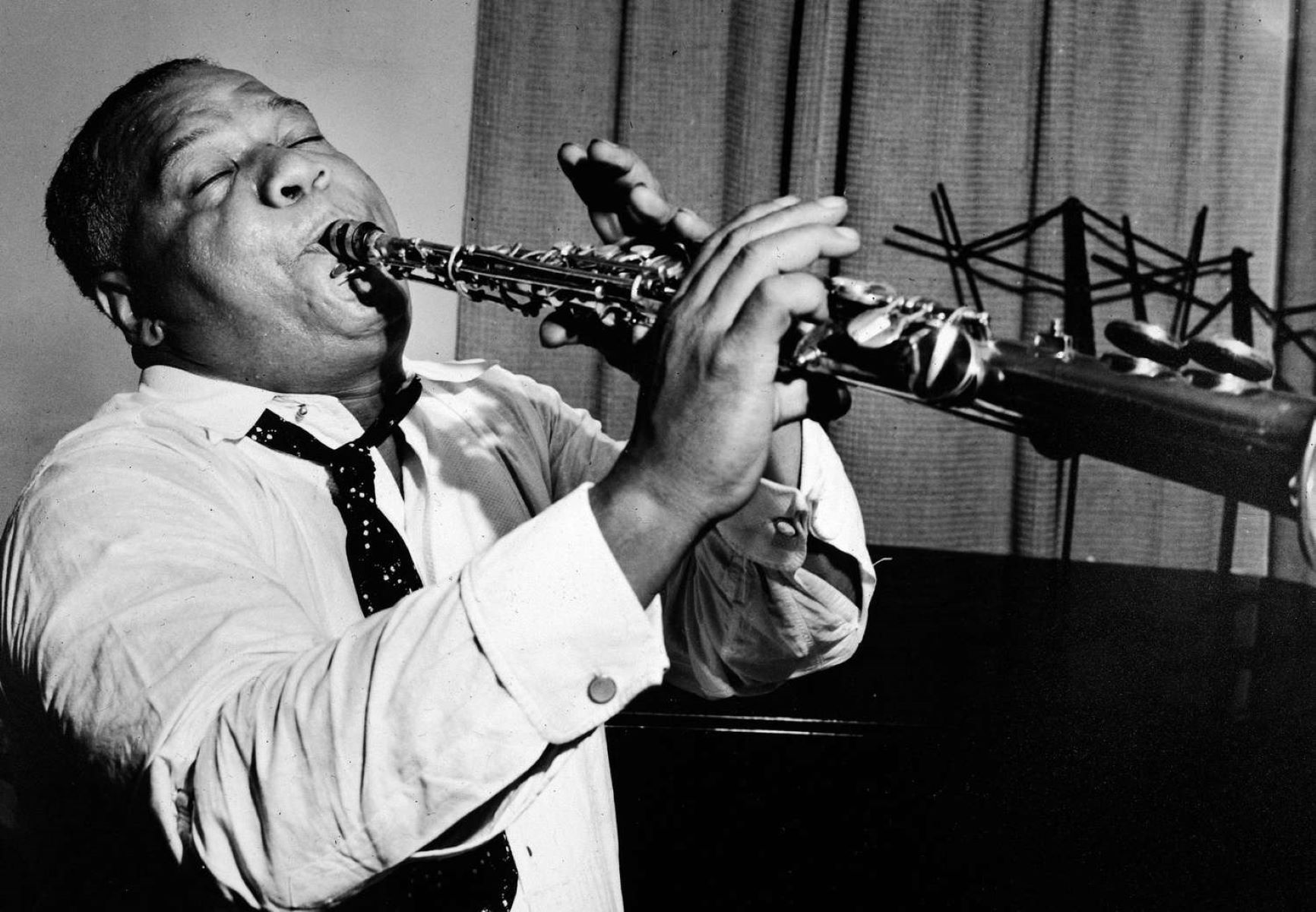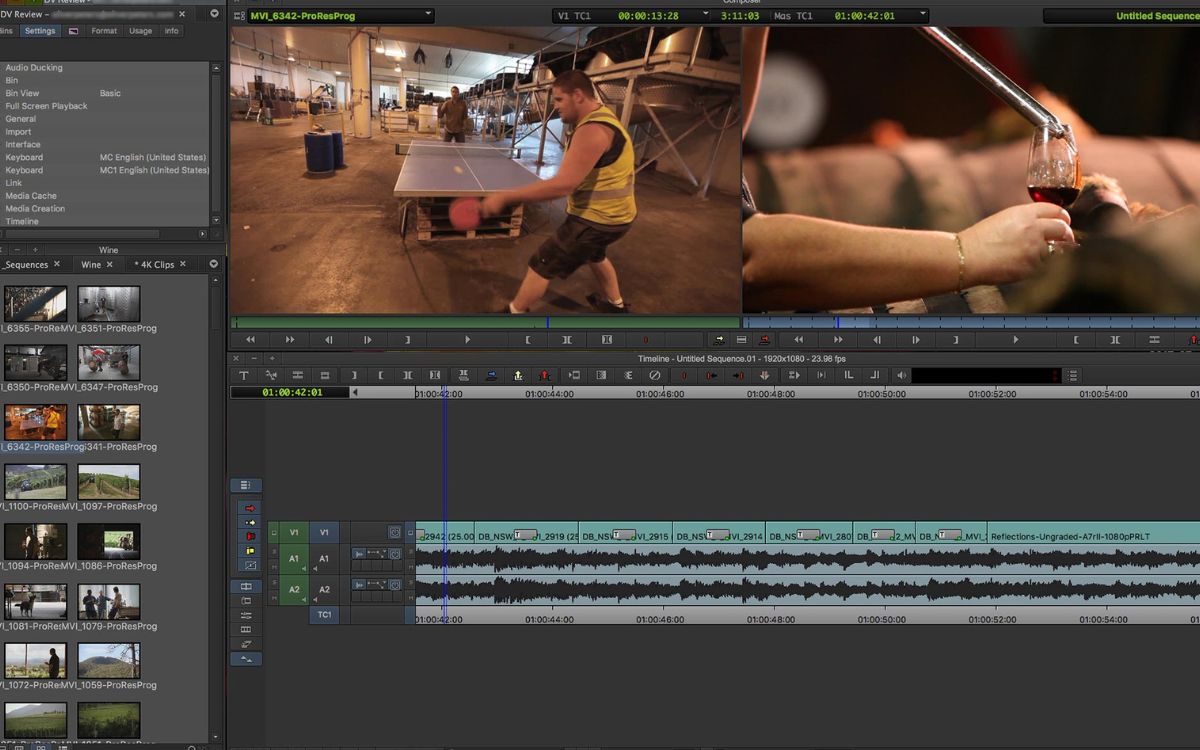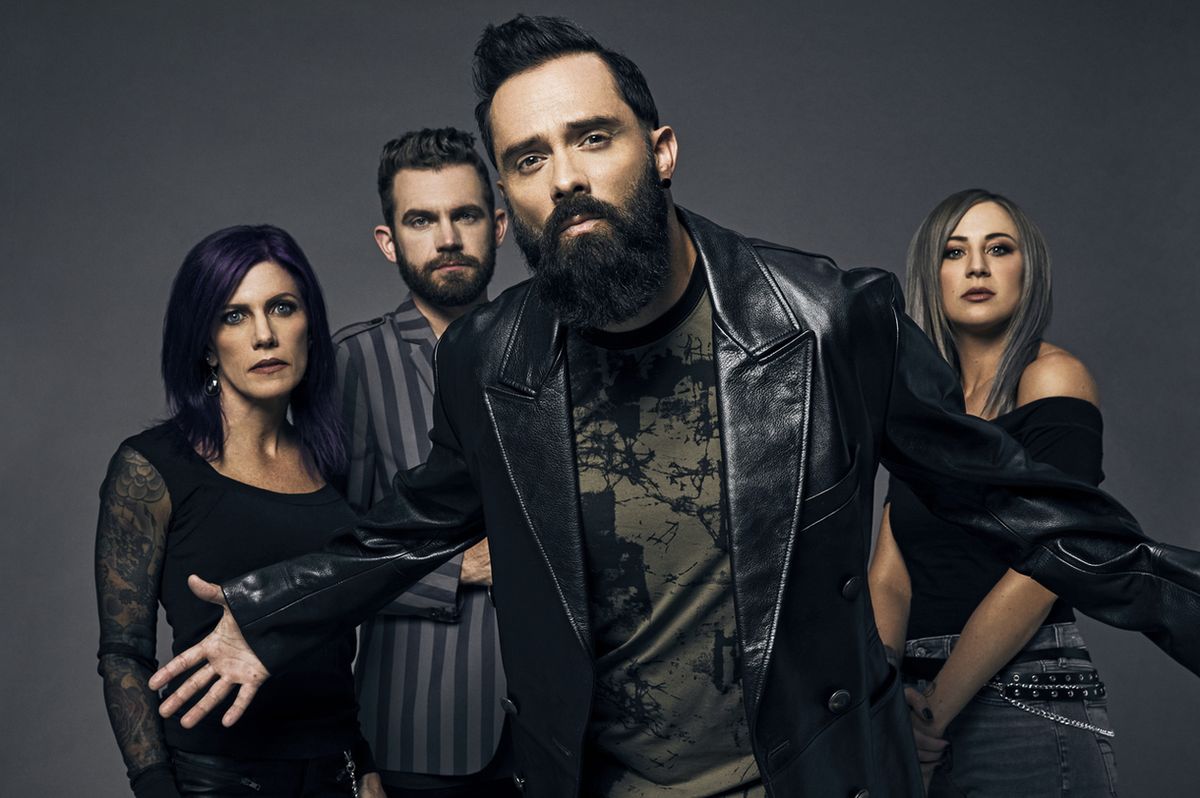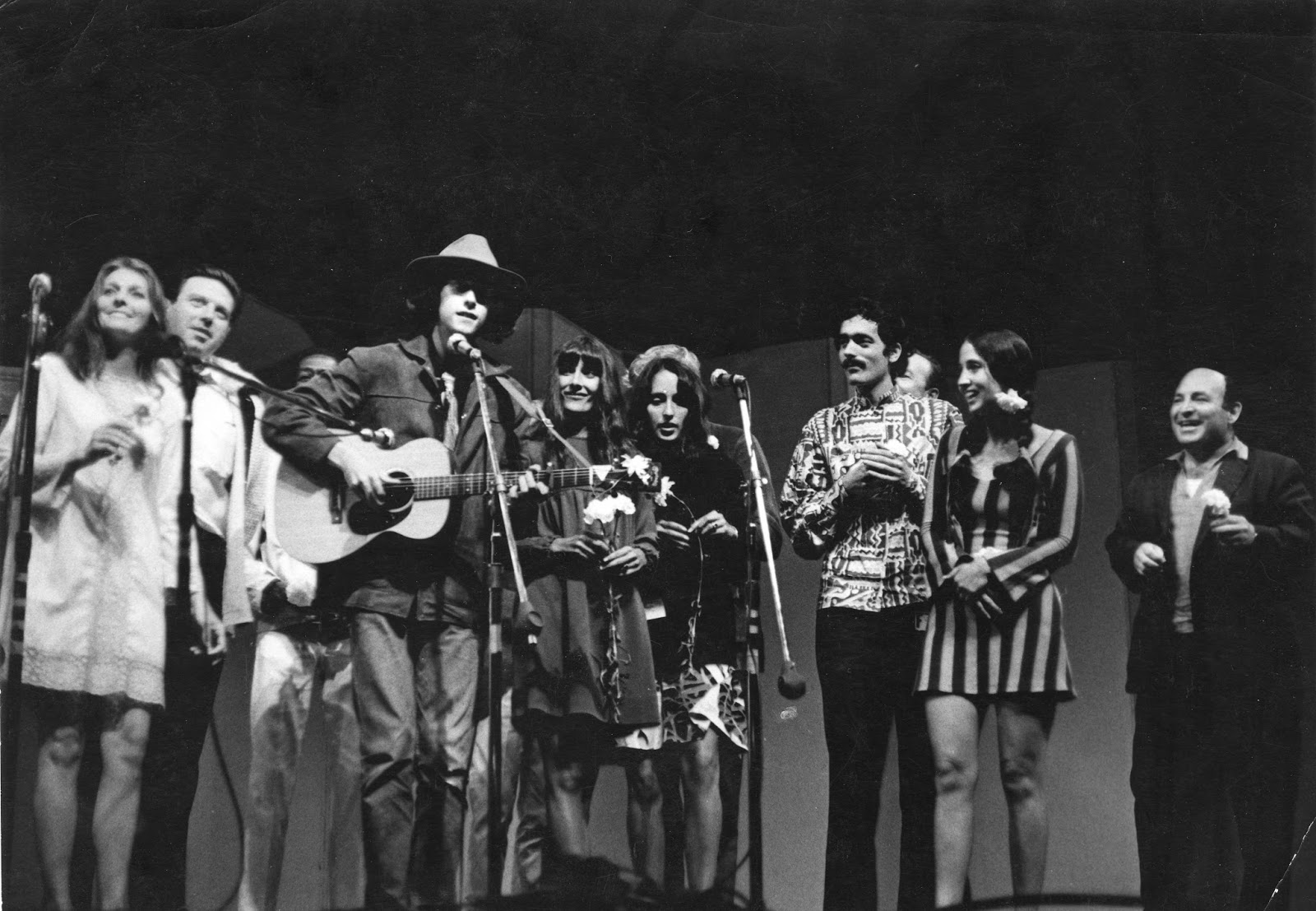Home>Events & Info>Podcast>What To Say In Your First Podcast Episode


Podcast
What To Say In Your First Podcast Episode
Published: December 13, 2023
Discover how to create an engaging first podcast episode. Unlock tips and techniques to captivate your audience. Get started with your podcast journey now!
(Many of the links in this article redirect to a specific reviewed product. Your purchase of these products through affiliate links helps to generate commission for AudioLover.com, at no extra cost. Learn more)
Table of Contents
- Introduction
- The Importance of a Strong Opening
- Share Your Podcast’s Purpose and Goals
- Introduce Yourself and Your Co-host (if applicable)
- Give a Brief Background or Story
- Set the Tone and Style of Your Podcast
- Outline the Format of Your Episodes
- Preview Upcoming Episodes or Topics
- Thank Your Listeners and Encourage Engagement
- Final Thoughts and Closing Remarks
Introduction
Welcome to the world of podcasting! Whether you’re a seasoned content creator or just starting out, your first podcast episode is crucial in setting the tone for your entire show. It’s your opportunity to introduce yourself, connect with your audience, and establish what your podcast is all about. This article will guide you through the process of crafting a compelling and engaging first episode that will leave your listeners eager for more.
Podcasts have exploded in popularity in recent years, offering a unique and intimate way for people all over the world to share stories, knowledge, and insights. With millions of podcasts available on various platforms, it’s essential to make a strong first impression to stand out from the crowd.
The key to a successful first episode lies in its ability to grab the attention of your target audience and make them want to subscribe and listen to future episodes. You have a short window of time to captivate your listeners, so it’s important to make every word count.
Think of your first episode as your podcast’s “hook” – the enticing introduction that reels in your audience and keeps them engaged. It’s your opportunity to showcase your personality, expertise, and the unique value you bring to the podcasting world.
But how exactly do you achieve this? Let’s dive into some essential elements that will help you create an impactful and memorable first episode for your podcast.
The Importance of a Strong Opening
They say you never get a second chance to make a first impression, and this holds true in the world of podcasting. Your opening is the gateway to your podcast, setting the stage for what’s to come and capturing the attention of your listeners right from the start.
A strong opening not only grabs attention but also establishes the tone and personality of your podcast. It gives your audience a taste of what they can expect and why they should continue listening.
One effective way to start your podcast is with a captivating hook – a compelling statement, question, or story that immediately piques the interest of your listeners. This hook should be intriguing, compelling, and directly related to the theme or topic of your podcast.
For example, if you’re hosting a true crime podcast, you could start with a chilling statistic or a gripping anecdote that leaves your audience wanting to know more. If you’re hosting a comedy podcast, starting with a humorous anecdote or a witty remark can instantly connect with your audience and set the tone for an entertaining show.
Remember, the opening of your podcast sets the tone for the entire episode and helps you build a connection with your listeners. So, aim to be authentic and genuine in your delivery, allowing your personality to shine through.
In addition to the hook, it’s crucial to introduce yourself, briefly explain the purpose of your podcast, and express your enthusiasm for the topic. This establishes credibility and gives your audience a reason to invest their time in listening to your podcast.
Keep in mind that the first few moments are critical in holding your listener’s attention. You want to create an immediate emotional connection and provide value right from the start. Whether it’s through storytelling, offering a unique perspective, or presenting valuable information, make sure your opening intrigues and captivates your audience.
Lastly, make sure to use your voice effectively. Emphasize key points, vary your tone, and employ pauses to create suspense and keep your listeners engaged. Your voice is not only a tool for conveying information but also the vessel through which you can convey emotion and establish a connection with your audience.
A strong opening is the foundation upon which you build your podcast. So take the time to carefully craft this section of your first episode, ensuring it captures attention, establishes your identity, and sets the stage for an unforgettable podcasting journey.
Share Your Podcast’s Purpose and Goals
Once you’ve captured your audience’s attention with a strong opening, it’s important to clearly communicate the purpose and goals of your podcast. This helps your listeners understand what they can expect and why they should continue tuning in to future episodes.
Start by succinctly explaining the overarching theme or topic of your podcast. Is it a business podcast offering tips and strategies for entrepreneurs? A personal development podcast focused on mental health and self-improvement? Or perhaps a pop culture podcast discussing the latest movies and TV shows?
Next, delve into the specific goals you hope to achieve with your podcast. Are you aiming to educate and inform your audience? Inspire and motivate them? Entertain and provide a much-needed escape from everyday life? Clearly articulating your goals helps your listeners connect with your vision and understand how your podcast can benefit them.
It’s also helpful to highlight the unique angle or perspective that sets your podcast apart from others in the same niche. What makes your podcast different and worth listening to? Whether it’s your expertise in the field, access to special guests, or a fresh take on a popular topic, emphasize what makes your podcast unique and valuable.
Additionally, consider sharing the format and structure of your episodes. Will you be featuring interviews, solo discussions, or a mix of both? Will there be segments and recurring themes? Providing this information gives your audience an idea of what to expect and helps them determine if your podcast aligns with their interests.
Remember, transparency is key in building trust and loyalty with your audience. Clearly outlining the purpose and goals of your podcast helps establish credibility and sets the foundation for a successful podcasting journey.
Introduce Yourself and Your Co-host (if applicable)
Now it’s time to let your listeners get to know the person behind the microphone – you! Introducing yourself and sharing a bit about your background and expertise helps establish a personal connection with your audience and builds trust.
Start by sharing your name and a brief overview of who you are. Highlight your relevant experience, qualifications, or passions that make you uniquely qualified to host this podcast. This can include any previous podcasting experience, professional background, or personal stories that tie into the theme of your podcast.
In addition to introducing yourself, it’s also important to introduce your co-host, if you have one. Give a brief background on who they are, their expertise, and how they add value to the podcast. This allows your audience to understand the dynamic between you and your co-host and enhances the overall listening experience.
When introducing yourself and your co-host, don’t be afraid to inject some personality and showcase your enthusiasm for the topic. Let your passion shine through and allow your audience to get a sense of who you are as a person.
This section is also a great opportunity to share any personal stories or experiences that relate to the podcast’s themes. By sharing relatable anecdotes, you create a connection with your audience and establish yourself as a trustworthy and relatable host.
Remember, the goal is to make your listeners feel like they’re having a conversation with a knowledgeable friend. So, be authentic, be yourself, and let your personality shine. This is your chance to leave a lasting impression and make your audience excited to join you on your podcasting journey.
Give a Brief Background or Story
A podcast is more than just a platform for sharing information; it’s an opportunity to connect with your audience on a personal level. One effective way to foster that connection is by giving a brief background or sharing a compelling story that adds depth and relatability to your podcast.
Start by providing a snapshot of your journey or the inspiration behind your podcast. Did a personal experience lead you to explore a particular topic? Or perhaps a lifelong passion drove you to create a podcast that allows you to dive deeper into a subject you love?
Share the challenges you faced along the way and how they shaped your perspective. This vulnerability and willingness to share your own journey create a sense of authenticity that resonates with your audience. It shows that you understand their struggles and challenges, and it establishes you as a trusted guide and mentor.
If applicable, you can also share any milestones or achievements that have contributed to your expertise in the field. Highlighting these accomplishments adds credibility and reassures your audience that they are in capable hands.
Remember, storytelling is a powerful tool in engaging your audience. A well-crafted story can evoke emotions, create empathy, and inspire action. So, when sharing your background or a personal story, consider the elements that make it compelling – conflict, resolution, emotion – and weave them into your narration.
By giving a brief background or sharing a relevant story, you invite your audience into your world. You establish trust, build a connection, and make your podcast a journey of discovery and growth that you embark on together.
Set the Tone and Style of Your Podcast
Setting the tone and style of your podcast is crucial in creating a consistent and engaging experience for your listeners. The tone and style determine the overall feel and atmosphere of your podcast, whether it’s casual and conversational, informative and educational, or entertaining and comedic.
Consider the theme and purpose of your podcast when determining the appropriate tone. Are you addressing serious and thought-provoking topics that require a more formal tone? Or are you aiming for a lighthearted and humorous approach to keep your audience entertained?
One effective way to set the tone is through your language and vocabulary. The words and phrases you choose can convey a sense of professionalism, authenticity, or humor. Strive for consistency in your tone throughout the episode to create a cohesive listening experience.
In addition to tone, think about the style of your podcast. This includes the pacing, structure, and overall format of your episodes. Are you more of a storyteller, weaving narratives throughout your episodes? Or do you prefer a structured approach with distinct segments and recurring themes?
Think about your target audience and what appeals to them. Are they looking for in-depth analysis, practical tips, or entertaining anecdotes? Tailor your style to meet their expectations and keep them engaged from start to finish.
Another aspect of style is the use of music and sound effects. Creating a signature intro and outro with catchy music can instantly set the mood for your podcast. SFX can be used to enhance certain moments or transitions, adding an extra layer of immersion for your listeners.
Ultimately, the tone and style of your podcast are a reflection of your own personality and the image you want to project. It’s important to strike a balance between being authentic and catering to your audience’s preferences.
Remember, your tone and style should align with the content of your episodes and the expectations of your target audience. Consistency in tone and style builds familiarity and trust with your listeners, keeping them coming back for more.
Outline the Format of Your Episodes
Having a clear and well-defined format for your podcast episodes is essential for keeping your listeners engaged and providing them with a consistent experience. Outlining the format of your episodes helps you stay organized and ensures that you cover all the necessary elements within a structured framework.
Start by determining the overall length of your episodes. Are you aiming for shorter, bite-sized episodes or longer, more in-depth discussions? This will help your audience know what to expect and plan their listening accordingly.
Next, consider the structure of your episodes. Will you be following a linear progression, moving from one topic to another in a logical sequence? Alternatively, will you embrace a more conversational style, allowing the conversation to flow organically between you and any guests you have?
Segmenting your episodes can provide a sense of variety and keep your audience engaged. This can include segments like a “top stories” section, listener Q&A, or recurring features that make your podcast unique. This segmentation also makes it easier for your audience to navigate through the episode and find the content they’re most interested in.
Consider incorporating different types of content within your episodes as well. This could include interviews with experts in your field, solo episodes where you share insights and advice, or even mini-case studies or research summaries. Variety in content keeps your podcast fresh and appealing to a wider range of listeners.
Additionally, think about any visuals, if applicable, that you can incorporate to enhance your episode format. This can be as simple as providing timestamps or images related to the topics you discuss on your website or social media platforms. Visual aids can help your audience follow along and add another layer of engagement.
Don’t forget to communicate your episode format to your listeners in the beginning of each episode. Giving them a brief overview of what they can expect helps manage expectations and keeps them engaged with your content.
Remember, the format of your episodes should be flexible enough to accommodate different topics and guests, but also consistent enough to provide a recognizable structure. Find a balance that works for you and your audience, and use it as a foundation to create compelling and well-structured episodes every time.
Preview Upcoming Episodes or Topics
One effective way to keep your audience engaged and excited about your podcast is by providing a preview of upcoming episodes or teasing future topics. This not only creates anticipation but also gives your listeners a glimpse into what they can look forward to in future episodes.
Take a moment to briefly discuss the topics or themes that you plan to cover in upcoming episodes. This can be as simple as mentioning the title or giving a general overview. Providing a sneak peek ignites curiosity and encourages your audience to tune in for more.
If you have any exciting guests lined up for future episodes, make sure to mention their names and give a brief description of their expertise or accomplishments. This builds anticipation and adds credibility to your podcast as well.
Consider sharing any unique features or special segments you have planned. Whether it’s a deep dive into a specific topic, a series of episodes exploring a certain theme, or even a live Q&A session with your listeners, sharing these details creates excitement and gives your audience something to look forward to.
It’s important to strike a balance between providing enough information to tantalize your listeners and keeping some surprises for the actual episodes. You want to create a sense of curiosity and anticipation without giving away too much.
Additionally, encourage your audience to provide feedback or suggest topics they would like to see covered in future episodes. This not only shows that you value their input but also gives you valuable insights into what your listeners want to hear, ensuring that your content remains relevant and engaging.
Lastly, make sure to mention the regular release schedule of your podcast. Let your audience know when they can expect new episodes, whether it’s weekly, bi-weekly, or monthly. Consistency in your release schedule builds trust and keeps your audience coming back for more.
By previewing upcoming episodes or topics, you create a sense of anticipation and engagement with your listeners. It’s an effective way to keep them interested and ensures that they’ll stay tuned in for the exciting content that lies ahead.
Thank Your Listeners and Encourage Engagement
As you wrap up your first podcast episode, it’s essential to express gratitude and show appreciation to your listeners for tuning in. Taking the time to thank your audience not only demonstrates your genuine appreciation but also encourages them to stay engaged with your podcast and become active participants in the community you’re building.
Start by expressing your gratitude. Let your listeners know how much you value their support and the fact that they’ve chosen to spend their time listening to your podcast. This simple act of gratitude goes a long way in building a loyal and dedicated audience.
Encourage engagement by inviting your listeners to connect with you. This can be through social media platforms, email, or a dedicated website. Promote these channels and let your listeners know that their feedback, questions, and suggestions are valuable to you.
Encourage your audience to leave reviews and ratings on podcast platforms. Positive reviews not only boost your podcast’s visibility but also provide social proof to new listeners who may be considering giving your show a chance. You can even incentivize your listeners by offering a shoutout, a special giveaway, or exclusive content for those who engage with you.
Consider incorporating a call-to-action at the end of your episode. This can be as simple as asking your listeners to share the episode with their friends or family or inviting them to join a specific discussion or community related to your podcast’s content.
Lastly, express your excitement for the journey ahead and emphasize your commitment to deliver valuable content in future episodes. Let your audience know that they can expect consistent, high-quality episodes that will keep them coming back for more.
Remember, building a community around your podcast is vital for its growth and success. Your audience plays a crucial role in this process, so show them gratitude, encourage engagement, and foster a sense of belonging in your podcast’s community.
Final Thoughts and Closing Remarks
As you conclude your first podcast episode, it’s important to leave your listeners with a memorable and impactful ending. The final moments of your episode are an opportunity to reinforce your connection with your audience and set the stage for future episodes.
Start by summarizing the key points discussed in your episode. Recap the main takeaways and highlight any actionable steps or insights that your listeners can implement in their lives. This reinforces the value of your podcast and ensures that your audience leaves with tangible benefits.
Convey your appreciation once again for the time and attention your listeners have given you. Thank them for joining you on this podcasting journey and reiterate your commitment to providing them with valuable content in each episode.
Encourage your audience to subscribe to your podcast and share it with others who may benefit from the information or entertainment you provide. Word-of-mouth is a powerful tool in growing your podcast’s reach, and your enthusiastic endorsement can encourage your listeners to become ambassadors for your show.
Consider teasing a future episode or topic to keep your audience engaged and excited for what’s to come. This builds anticipation and gives your listeners a reason to continue following your podcast.
Finally, end on a positive and inspiring note. Share a meaningful quote, a personal mantra, or words of encouragement that resonate with the theme of your podcast. Leave your audience feeling motivated and uplifted, ready to take on the challenges and opportunities that lie ahead.
Remember, your closing remarks are your last opportunity to leave a lasting impression on your listeners. Make it memorable, heartfelt, and reflective of the overall tone and mission of your podcast.
With these final thoughts and closing remarks, you wrap up your first episode on a high note, leaving your listeners eager to engage with future episodes and fostering a sense of connection that will keep them coming back for more.











